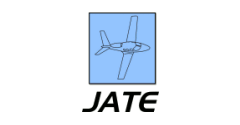Author Background
Dr. Marian Schultz is a tenured full professor at the University of West Florida. She holds a Bachelor’s degree from the University of Detroit/Mercy, a Master’s degree from Pepperdine University, and a Doctorate from the University of Southern California. She has over 100 journal articles and presentations, and served as a consultant for Pace Foods, the 149thth Fighter Wing at Kelly AFB, and conducted the United States Air Force Supervisory Workshops on Eglin AFB. One of her articles was published in the Spring 2004 edition of the Air and Space Power Journal.
Dr. James T. Schultz holds a Bachelor’s degree from Michigan State University, Master's degrees from the University of Oklahoma and Embry-Riddle Aeronautical University, and a Doctorate from the University of Southern California. He is a licensed pilot who spent 22 years in the U.S. Air Force, serving in numerous locations including Vietnam, Taiwan, and the Panama Canal Zone, While in the Air Force, he was assigned as the Base Commander at Bellows Air Force Base and Deputy Camp Commander at the Kilauea Military Camp, both located in Hawaii. He was also assigned to Headquarters, Strategic Air Command and the Air Force Military Personnel Canter. He spent 26 years at Embry-Riddle Aeronautical retiring as the Dean of the College of Arts & Sciences, and given Professor Emeritus status.
Joshua J. Schultz has a Bachelor's degree from Spring Hill College, a Master degree in Leadership from Embry Riddle Aeronautical University and another Master degree in Human Factors also from Embry Riddle Aeronautical University. He is currently a doctoral student in Aviation/Human Factors at Capitol Technology University. He is Senior Associate Integration Test Engineer with L3/HARRIS Corporation.
Abstract
In early aircraft, the amount of fuel the aircraft could carry usually determined how long it could stay in flight. Today, with aircraft being able to air refuel, the time they are able to stay aloft is based more on human needs, one being waste management. Voiding urine in a single-seat ejection seat aircraft has been an issue for male pilots in the past, but with the increasing numbers of female pilots in single-seat aircraft, finding a solution has intensified. This paper reviews the various methods that are available for both male and female pilots, including the newest method which allows the pilot to vacuum urine into a containment vessel. Future improvements in waste management will continue to progress with time and technology. While these may involve improving ways to urinate in the cockpit, they could also involve ways to perhaps slow the production of urine by the body. But for the present, pilots will have to select from a pool of the devices currently available.
Recommended Citation
Schultz, Marian C.; Schultz, James T.; and Schultz, Joshua J.
(2021)
"Female Relief Systems in U.S. Military Fighter Ejection Seat Aircraft,"
Journal of Aviation Technology and Engineering:
Vol. 10:
Iss.
2, Article 1.
Available at: https://doi.org/10.7771/2159-6670.1220
DOWNLOADS
Since January 13, 2022
COinS


